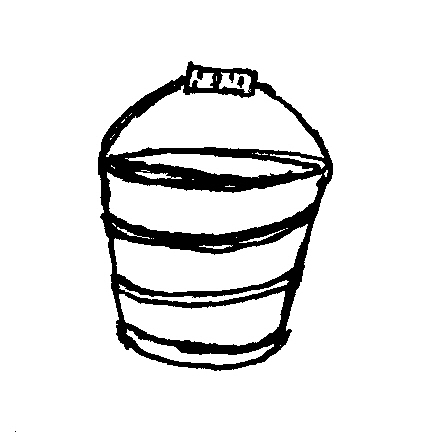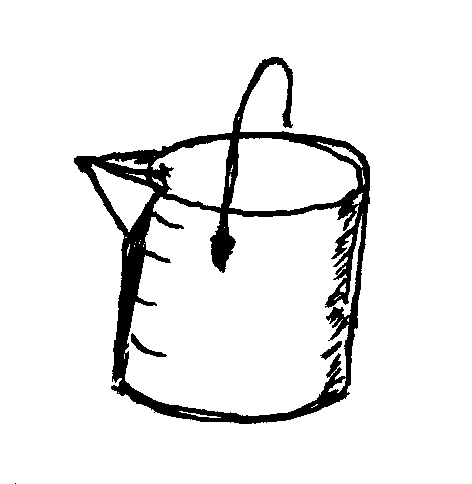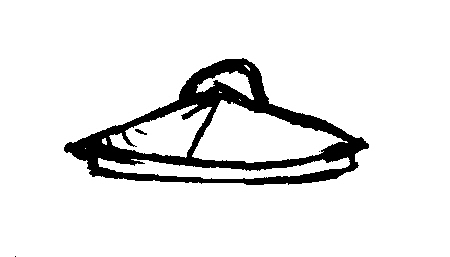| 1. Different stages in the growth of cattle |
| laogh tairbh | bull calf. |
| laogh boireann | quey calf. |
| gamhainn | up to 3 years of age. |
| agh | [cow] bearing the first calf. |
| damh | castrated bull or bullock. |
| mart-làmhaidh | a cow fattened for slaughter. |
| bó bhoinne | a milch cow, any age. |
| bó bhloghainn | a milking cow (actually in milk, any age). |
| bó laoigh | a cow of calving age, older than agh [q.v.]. |
| 2. Breeds of cattle |
| crodh-Gaidhealach | Highland cattle. |
| crodh-Gallda | e.g. Ayrshire, Shorthorn etc. |
| 3. Outward appearance of cattle |
| bó dhonn | |
| bó dhubh | |
| bó riabhach | |
| bó bhreac | |
| bó odhar | |
| bó stiallach | |
| sgiamhach | fat with shiny coat. |
| culan | fat, e.g. Tha culan math oirre. |
| starrach | lean and bony. |
| cruaidh | lean, e.g. ’S ann cruaidh a tha i. |
| seang | lean, no belly. |
| air thogail | so poor and weak that the animal had to be lifted to its feet. |
| stùdhach | short in the tail. |
| gireach | poor, dry-looking coat. (Pronounced with English ‘th’ sound instead of Gaelic ‘R’.) |
| lom | lean in flesh, short in coat. |
| lothach | bedraggled. (Pronounced with English ‘th’ sound, i.e. ‘loth’ as in English ‘cloth’ but with the Gaelic double ‘l’ sound at the beginning of the word.) |
| [cramhan] | ‘Tha na cramhan gos tigh’nn troimh na chracann.’ |
| 4. Names for certain beasts, e.g. an animal on which the owner bestows particular attention |
| sùileagan | It could also mean e.g. a person who had been in very good circumstances and who, through his own foolishness, became reduced to lowly straits. Tha e ’na shùileagan a measg nan daoine. |
| 5. Parts of the body |
| stròn () | [fem.] |
| duileasg na stròine | membrane inside the nose. |
| calg () | [masc.] hair. |
| seich () | [fem.] hide. |
| ochd | breast. |
| crumhanan | hoofs. |
| crumhanan beaga | fetlocks. |
| creamh-droma | back-bone. |
| smior-cailleach | spinal cord. |
| crudha-deiridh | hind quarters. |
| crudha-cinn | fore quarters. |
| losaid | hip. |
| sùil a leis | hip. |
| ùrubull (earbull) | tail. |
| bun | top end of tail. |
| bàrr | end of tail. |
| ùgh | udder. |
| sinean | teats. |
| fèithean | muscles. |
| sgòrnan | trachea. |
| ubhal a’ sgornain | larynx. |
| staoig an amadain | spleen. |
| domalas (domblas) () | [masc.] gall-bladder. |
| poc an tairbh | the testicles. |
| na clachan | the testicles. |
| slat an tairbh | the penis. |
| cochull | sheath from which penis emerges. |
| it itheach | gullet. |
| maodal () | [fem.] big stomach. |
| am brailean () | [masc.] small stomach. |
| na caolanan | intestines. |
| na caolanan gorma | small intestines. |
| na caolanan glas | small intestines. |
| an caolan mor | large intestine. |
| geir | abdominal fat. |
| na lòineachan | fat round the kidneys. |
| streibhinn | a thin piece of skin, such as the diaphragm, or e.g. the fat on the stomach of a lean animal. “An robh tòrr geir oirr?” “Cha robh. Dìreach streibhinn bheag air a mhaodal.” |
| 6. Calving |
| dàir | “Tha an dàir air a bhoin.” The cow is abulling. “Chaidh a bho a dhàir.” “Dhàir an tarbh a bhó.” The cow was bulled (successfully). |
| leum dàir | the successful mount of the bull. |
| salachar an tairbh | semen left by the bull. |
| fiadhaichean | seen hanging from the genital organs of the cow, usually a sign that she needs the bull. |
| gleodhan | seen hanging from the genital organs of the cow, usually a sign that she needs the bull. |
| breith a’ laoigh | |
| am balg uisg | bag of water surrounding the calf. |
| leabaidh a’ laoigh | uterus. |
| salachar | placenta. Salachar an tairbh – semen. |
| casan ladhrach | the soft white underpads on a calf’s feet, used to be roasted on the fire and eaten. |
| 7. Milking |
| [strideag] | ’Bleoghan gu na strideig mu dheireadh – [milking to the last drop]. |
| ùnns | milk yielded after calving. |
| miodair | a wooden vessel for feeding calves. |
| ceada | a wooden pail, very sturdy, with iron hoops and an iron handle which had a wooden roller in the centre. This roller was the ‘grip’. These wooden pails were not made locally – they were bought in the shops.
|
| muga seapain | quart jug (as supplied by the tinkers). |
| muga cheaird | quart jug (as supplied by the tinkers). |
| peile beag | [pail that] held about two or three quarts. |
| peile caol | a narrow, tall pail holding double that of the the peile beag [q.v.]. |
| peile mór | held, perhaps, more than double the peile caol [q.v.]. |
| peile-strùbach | bigger than the peile mòr [q.v.]. It had a spout on it. (All these pails were bought from the tinkers (except the ‘ceada’ [q.v.]). They were usually supplied complete with tin lid shaped like a flat cone.)
|
| an cliabh fodair | some cows (as a result of bad habit) did not yield their milk without being given a small quantity of succulent grass, turnip leaves etc. This was carried to them in a creel. Dried backbones of fish, such as cod, also served the same purpose. This saved carrying ‘fodder’ when the cows were at the shielings miles away from the villages. |
| buarach | a piece of rope for tying the two hind legs together. It was sometimes made of plaited string with a loop and toggle i.e. dul agus crag. |
| 8. Feeding |
| sopag fheòir | a handful of hay. |
| muilnean feòir | an armful of hay. |
| ultachan feòir | a double armful [of hay]. |
| bad coirc | a sheaf of oats. |
| bad eòrna | a sheaf of barley. |
| adag | stook. |
| comhlach | straw. |
| stràileach | straws left behind e.g. when a field was not raked properly. |
| ag innis | Tha an crodh ag innis as a bhuaile. |
| a’ cur a mach a’ chruidh | |
| a’ cur a steach a’ chruidh | |
| buachaille | |
| banabhuachaill | |
| buachailleachd | |
| a’ glanadh a’ bhaile | driving all the cattle to the common grazing. |
| a’ glanadh a’ chùil | driving all the cattle from the common grazing, usually sending them to the moor. |
| stocan càil | given to the cows to make them yield their milk: ‘gus a leagadh iad am boinne.’ [See also ceithle chàil] |
| ceithle chàil | given to the cows to make them yield their milk: ‘gus a leagadh iad am boinne.’ [See also stocan càil] |
| a’ cleith a bhoinne | the term used for [cows] with-holding their milk. |
| 9. Apparatus |
| stiall | Tha a’ mart air a stéill. I think this was the post to which the cow was tied. |
| smiathag or perhaps smiag | again, I think this was the piece of rope which was tied round the [cow’s] neck. |
| feisd | rope, made of heather at one time, for tying a cow while grazing. The end was fixed to a stick driven into the ground. |
| am bacan | the stob to which the feisd [q.v.] was tied. |
| deadhann | a rope tying the forelegs of horses so that they would not stray. (Pronounced: de-ay-ann, ‘de’ as in ‘deoch’.) |
| 10. Diseases |
| a’ chleimh | itchiness. |
| séid | swelling. |
| mialan | lice. |
| gartain | ticks. |
| fiarsannanan | warble-fly – grub in the hide. |
| an tòc | affecting the whole animal but located in the eye. “Thug e an tòc dhi.” He performed this particular operation to the eye of the cow. (Peculiar to West Uig, Lewis – not believed in by Vets.) |
| an teas bralain | some sort of indigestion. (?) |
| a’ spùt | diarrhoea. |
| 11. Miscellaneous |
| “trobhad, siugan, siugan, siugan beag” | call to a cow. |
| “trobhad, piatan, piatan, piatan beag” | call to a calf. |
| ‘Bha i ’na pliana ann a shid.’ | she was lying completely helpless. |
| buachair na ba | cow dung. |







